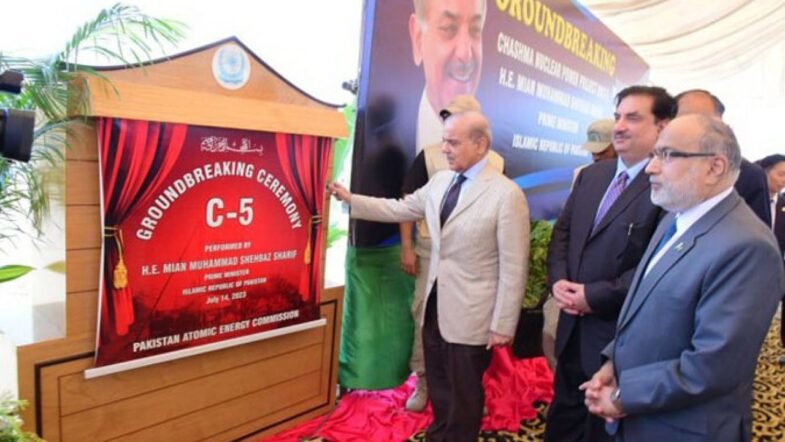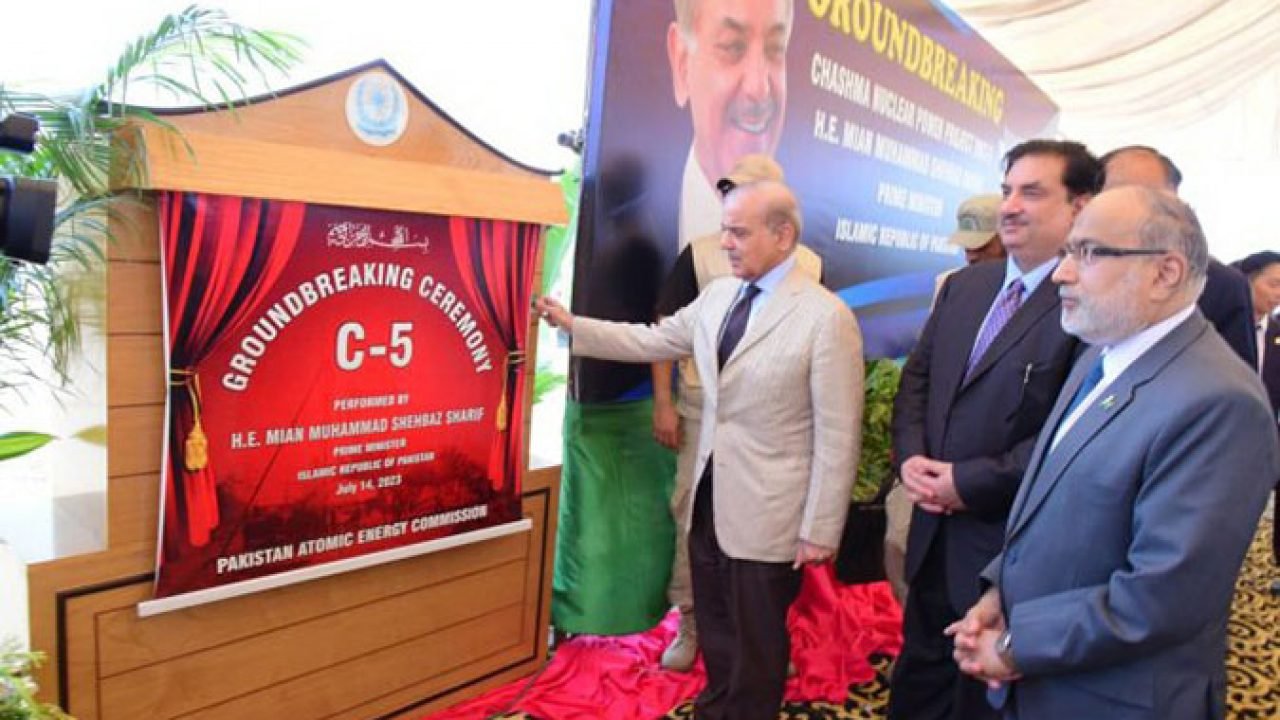Pakistan’s Prime Minister attended the groundbreaking ceremony for China National Nuclear Corporation (CNNC)’s 1200 MWe unit 5 of the Chashma nuclear power plant.

Pakistan’s Prime Minister attended the groundbreaking ceremony for China National Nuclear Corporation (CNNC)’s 1200 MWe unit 5 of the Chashma nuclear power plant.
The televised event was held in the central city of Chashma, known as the birthplace of China-Pakistan nuclear energy cooperation, and was attended by the prime minister and senior Chinese officials.
For 30 years, Beijing has installed four 1,300 megawatt nuclear power plants in Chashma. China provides fuel-grade uranium. This friendly cooperation encourages the use of affordable, clean energy and serves as a role model for other nations.
China’s Hualong One third-generation pressurised water nuclear technology will be utilised in Chashma-5, the country of Pakistan’s largest nuclear power plant. Pakistan’s largest generation-III plus nuclear power project, when finished in 2030, will move the nation one step closer to its target of producing 8,800 megawatts of affordable, clean energy.
Two nuclear power plants in Karachi, Pakistan, have been equipped with HPR1000 technology from Beijing, increasing the country’s daily energy output to over 3,500 megawatts. China’s efforts to find more customers for its HPR1000 reactors, developed by China National Nuclear Corporation (CNNC), the nation’s second-largest nuclear power producer, are seen as part of its accelerated civil nuclear cooperation with Pakistan.
CNNC Chairman Yu Jianfeng said at the ceremony that “HPR1000 is a homegrown nuclear technology of CNNC and a flagship of China’s advanced equipment manufacturing.” He mentioned that there are currently more than 17 HPR1000 units being built in China.
A new chapter in the China-Pakistan nuclear energy cooperation has begun with today’s groundbreaking for the C-5 project, according to Yu. In addition to being a shining example of international nuclear energy cooperation, our cooperation in nuclear energy has grown to be a crucial component of the China-Pakistan all-weather strategic cooperative partnership.
As part of its global Belt and Road Initiative, Beijing also built and launched 14 primarily coal-fired power plants with a combined installed capacity of 8,000 megawatts per day in Pakistan over the past ten years.
The mega project includes the China-Pakistan Economic Corridor (CPEC) projects, which also include ports, industrial zones, highways, and road networks. Critics contend that CPEC is a factor in Pakistan’s economic woes and the depletion of its foreign exchange reserves, which makes it challenging to pay back foreign debt. By 2030, the project is anticipated to cost $62 billion.
China’s defense partnership with Pakistan has grown over the past decade, but their cooperation is limited to civilian purposes. Pakistan and the International Atomic Energy Agency state that its civilian nuclear plants comply with safety guidelines.
